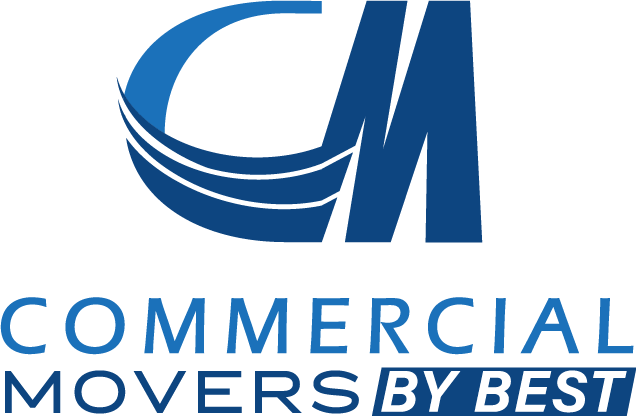Office relocations can be complex and time-consuming, requiring attention to detail and thorough preparation. Partnering with professional office movers can make the process significantly easier, but businesses must also avoid common mistakes that could derail their plans. Here are the five common mistakes during office moves.
Key Takeaways✔ Not starting the planning process early enough can lead to unnecessary delays, missed deadlines, and operational disruptions. Creating a timeline and allocating resources in advance ensures a smoother transition. ✔ Hiring unverified or inexperienced office movers can result in damaged equipment, hidden costs, or even scams. Vet movers by checking credentials, reviews, and references to ensure reliability. ✔ Without a detailed calendar, tasks may overlap or be forgotten. A well-organized timeline helps businesses coordinate responsibilities and align with office movers for an efficient move. ✔ Poor labeling confuses unpacking and delays the setup process. Using detailed, color-coded labels helps movers place items correctly and speeds up operations. ✔ Waiting too long to hire movers can limit options, increase costs, and lead to rushed preparations. Secure reputable office movers early to ensure availability and avoid logistical challenges. |
Why Hiring the Right Office Movers Is Important
The global office relocation services market was valued at $10.6 billion in 2022 and is projected to grow at a steady compound annual growth rate (CAGR) of 3.3%, reaching $14.6 billion by 2032. This growth underscores the increasing demand for professional expertise in managing complex office moves.
Choosing the right office movers is a foundational step in ensuring a smooth and efficient relocation. Unlike residential moves, office relocations require careful handling of specialized equipment, secure management of sensitive data, and precise coordination to minimize disruptions. This is where experienced professional movers come in. They offer the expertise, tools, and manpower necessary to navigate these unique challenges efficiently, ensuring a smooth transition for your business.
1. Expertise in Commercial Relocations
Professional office movers have experience with the unique logistics of commercial moves. They understand how to transport bulky office furniture, dismantle and reassemble workstations, and safeguard sensitive IT equipment.
2. Time Efficiency
Experienced movers streamline the relocation process by employing proven methods to pack, transport, and unpack items quickly. They can coordinate the move to minimize disruptions, ensuring that the business resumes operations as soon as possible.
3. Use of Specialized Equipment
Moving heavy furniture, electronics, and other office assets often requires specialized tools. The right office movers come equipped with dollies, hoisting straps, and protective materials to ensure safe handling. They also have vehicles designed to accommodate large and delicate items, further safeguarding assets during transport.
4. Liability Coverage and Peace of Mind
Licensed and insured movers provide an added layer of security. In the rare event of damage, liability coverage ensures that businesses are reimbursed for their losses.
5. Coordination and Flexibility
Reliable office movers work closely with businesses to develop a customized relocation plan. They can adapt to specific needs, such as moving outside business hours or coordinating multi-phase moves for large offices.
What to Look for in Office Movers
When selecting office movers, evaluating their qualifications and services is essential to ensure they meet the business’s needs.
1. Credentials and Experience
Always verify that the moving company is licensed, insured, and experienced in handling office relocations. Movers with a proven track record are more likely to anticipate and address challenges specific to business moves, such as handling IT equipment, navigating tight schedules, or managing sensitive documents.
2. Customer Reviews and Testimonials
Reputable office movers will have positive reviews on platforms like Yelp, Google, or the Better Business Bureau. Reading these reviews provides insight into the company’s reliability, professionalism, and customer service.
3. Comprehensive Services
Businesses should look for movers that offer services tailored to office relocations. These may include:
- Furniture Disassembly and Reassembly: Ensuring workstations and cubicles are moved efficiently.
- IT Equipment Handling: Specialized care for computers, servers, and other electronics.
- Long-Distance Moves: Expertise in cross-state or international relocations.
- Storage Solutions: Temporary or long-term storage options for items not immediately needed.
4. Transparent Pricing
A detailed, written estimate is essential to avoid unexpected costs. The estimate should outline all charges, including labor, transportation, packing materials, and any additional fees.

5 Mistakes to Avoid When Planning a Move with Office Movers
1. Failing to Plan Ahead
Planning ahead is not only advisable but essential for any successful office relocation. Businesses often underestimate the complexity of moving, leading to unnecessary delays, missed deadlines, and heightened stress levels. When companies fail to prepare adequately, the consequences can ripple through their operations, affecting both employees and clients.
Why Planning Matters
- Organizational Clarity: Starting early gives businesses the time to carefully outline every step of the move. This clarity helps ensure that nothing is overlooked, from packing supplies to IT infrastructure disassembly. Having a clear roadmap allows for adjustments when unexpected challenges arise.
- Resource Allocation: Planning ahead ensures businesses have enough time to gather essential resources. These include packing materials, specialized equipment, and the expertise of office movers. Without adequate preparation, companies may find themselves scrambling to procure these items at the last minute, often at a higher cost.
- Minimizing Disruptions: Relocations can disrupt daily operations if not executed efficiently. By planning, businesses can coordinate timelines, minimize downtime, and ensure a smooth transition from one office to another. This foresight is especially critical for client-facing businesses, where delays can directly impact revenue.
How to Plan Effectively
- Create a Comprehensive Timeline: Break the move into phases, such as decluttering, packing, transportation, and setup. Assign deadlines to ensure progress stays on track.
- Delegate Responsibilities: Assign specific tasks to team members, such as overseeing IT equipment packing or coordinating with office movers. Clear roles prevent confusion and improve efficiency.
- Conduct Regular Progress Reviews: Schedule weekly or biweekly check-ins to monitor progress and address potential issues early.
- Build in Buffer Time: Include extra time in the schedule to handle unforeseen challenges, such as delays in securing permits or disruptions in service delivery.
2. Skipping a Thorough Background Check on Office Movers
Not all office movers are equally qualified, and failing to perform a thorough background check can lead to costly mistakes. Hiring movers without proper vetting increases the risk of delays, damaged equipment, and financial loss.
Risks of Choosing the Wrong Movers
- Lack of Expertise: Inexperienced movers may lack the skills to handle complex relocations, such as transporting fragile IT equipment or bulky office furniture. This can result in damaged property or prolonged delays.
- Hidden Costs: Some movers offer low initial estimates but later add unexpected fees for services like extra labor or packaging. This lack of transparency can strain budgets and erode trust.
- Potential Scams: Without proper research, businesses risk falling victim to fraudulent operators who may take deposits without delivering services or fail to honor their commitments.
How to Vet Office Movers
- Verify Credentials: Check if the movers are licensed and insured. Reputable office movers should provide documentation upon request.
- Research Reviews: Read customer feedback on platforms like Yelp and Google. Pay attention to recurring themes in reviews, whether positive or negative.
- Request References: Ask for a list of past clients and contact them for insights into the mover’s reliability and professionalism.
- Compare Estimates: Obtain detailed quotes from at least three office movers. Ensure all costs, including packaging materials and additional labor, are outlined upfront.
3. Forgetting to Use a Detailed Moving Calendar
A moving calendar is more than just a timeline—it is a project management tool that ensures every task is completed efficiently. Without a calendar, businesses risk creating unnecessary bottlenecks and confusion.
Benefits of a Moving Calendar
- Time Management: A calendar keeps tasks organized and ensures critical milestones are met. It also provides a visual representation of the progress, making it easier to identify and address delays.
- Task Delegation: Assigning tasks to specific individuals minimizes overlap and inefficiencies. For example, one employee can handle vendor communications while another coordinates with office movers.
- Coordination with Office Movers: A detailed calendar ensures alignment between the business and the movers. Sharing the timeline with office movers allows them to plan their tasks accordingly, reducing the likelihood of last-minute changes.
How to Create an Effective Calendar
- Include Key Milestones: Identify significant events, such as packing deadlines, moving day, and utility setup at the new location.
- Incorporate Dependencies: Highlight tasks that rely on the completion of others, such as unpacking IT equipment after setting up desks.
- Use Digital Tools: Leverage project management software like Asana or Trello to share the calendar with the team and movers for seamless collaboration.

4. Neglecting to Label Boxes Clearly
Clear labeling is a small detail that has a big impact on the success of an office move. Poorly labeled boxes can create chaos during unpacking, leading to delays and misplaced items.
Why Labeling Matters
- Easy Identification: Labels allow movers and employees to quickly locate specific items, such as client files or office supplies. This speeds up the unpacking process and reduces downtime.
- Efficient Placement: Clear labels guide office movers on where to place boxes at the new location. For example, boxes marked “Marketing Department” can go directly to the appropriate area, saving time and effort.
- Reduced Risk of Loss: Proper labeling minimizes the chances of boxes being misplaced or overlooked during transit. This is especially important for critical equipment or confidential documents.
Best Practices for Labeling
- Use Color Codes: Assign a unique color to each department or category of items for quick identification.
- Add Detailed Descriptions: Include the box’s contents and its intended destination in the new office.
- Create a Master Inventory: Maintain a digital list of all labeled boxes for easy tracking.
5. Delaying Booking a Commercial Office Mover
Booking office movers too late can jeopardize the entire relocation process. The best movers are often booked weeks or months in advance, particularly during peak seasons.
Consequences of Delaying Booking
- Limited Options: Waiting too long reduces the pool of available movers, leaving businesses with fewer options.
- Higher Costs: Late bookings often come with premium rates, as movers may need to adjust their schedules to accommodate last-minute requests.
- Logistical Challenges: Last-minute bookings can result in rushed preparations, increasing the likelihood of errors or delays.
When to Book Movers
- Start Early: Begin researching office movers as soon as the move is confirmed.
- Plan for Peak Seasons: If the move coincides with high-demand periods, such as summer or year-end, book movers at least 8–12 weeks in advance.
- Confirm Details: Ensure a written agreement documents all aspects of the move, including timelines and services.

How to Ensure a Successful Office Move
Relocating an office is a complex process, but businesses can take proactive measures to ensure the transition goes as smoothly as possible. Beyond avoiding common mistakes, success relies on effective collaboration with office movers, thorough planning, and consistent communication.
Communicate Effectively with Office Movers
Good communication with office movers is the foundation of a successful relocation. It ensures that the moving team understands the business’s specific needs and can tailor their approach accordingly.
Best Practices for Communication
- Provide a Comprehensive Plan: Share detailed floor plans of the new office, a timeline of the move, and any unique requirements. For instance, certain areas, such as meeting rooms or IT workstations, might need to be prioritized for setup.
- Clarify Expectations: Discuss what is included in the mover’s services, such as packing, unpacking, or special handling for sensitive items. This prevents misunderstandings on moving days.
- Address Fragile or High-Value Items: Clearly label and discuss any fragile, high-value, or sensitive equipment that requires extra care. This could include servers, monitors, or confidential files.
- Maintain Open Lines of Communication: Assign a point of contact for the movers and ensure they are accessible throughout the process to address any concerns or last-minute changes.
Assign Roles and Responsibilities
A well-organized team within the business ensures that the relocation process remains efficient and manageable. Designating roles reduces confusion and allows employees to focus on specific tasks.
Steps to Assign Roles Effectively
- Appoint a Relocation Coordinator: This person acts as the central point of contact for both the office movers and employees. Their responsibilities include overseeing timelines, addressing issues, and ensuring that all tasks are completed.
- Delegate Packing Responsibilities: Assign specific individuals or teams to pack and label items for their departments. This ensures that those who know the equipment or documents best handle them with care.
- Inventory Management: Designate a team member to create and maintain a comprehensive inventory list, which will track all items being moved. This is especially important for large-scale relocations.
- Communicate with Stakeholders: Assign someone to notify clients, vendors, and service providers about the move. This includes updating addresses on contracts, invoices, and online profiles.
Prepare for Unexpected Challenges
Even with meticulous planning, unexpected issues can arise during an office move. Having contingency plans in place reduces the impact of such challenges and keeps the relocation on track.
Key Strategies for Handling Challenges
- Develop a Contingency Plan: Identify potential risks, such as weather disruptions, equipment damage, or transportation delays. Outline backup solutions for each scenario, such as alternate storage options or emergency repair services.
- Collaborate with Office Movers: Work closely with the moving team to anticipate challenges and create alternative plans. Experienced office movers often have insights into common pitfalls and can offer solutions.
- Secure Insurance Coverage: Ensure the business has adequate insurance for the move, including coverage for high-value items. This provides financial protection in case of damage or loss.
- Prepare for IT Downtime: Develop a plan to minimize disruptions to IT systems, such as arranging temporary setups or prioritizing the reinstallation of critical equipment.
Update All Stakeholders
A successful office move involves more than just the logistics of packing and transportation—it also requires keeping all relevant parties informed.
Steps for Keeping Stakeholders Updated
- Notify Clients and Vendors: Share the new address and moving date with clients, suppliers, and partners well in advance. This prevents disruptions to deliveries or communications.
- Update Official Information: Ensure that the company’s address is updated on all documents, including letterheads, contracts, and tax forms.
- Revise Online Listings: Update the company’s address on its website, social media profiles, and online directories like Google My Business. This helps clients and customers find the new location easily.
- Communicate Internally: Keep employees informed about the moving schedule, their responsibilities, and the layout of the new office. Providing a floor plan of the new space helps employees transition more comfortably.
Track Progress with a Checklist
A moving checklist is an essential tool for ensuring that all tasks are completed on time and in the correct order. It acts as a roadmap for the entire relocation process and keeps everyone aligned.
How to Create and Use a Moving Checklist
- Divide Tasks by Phase: Break the checklist into pre-move, moving day, and post-move sections. For example:
- Pre-Move: Secure office movers, pack non-essential items, and notify stakeholders.
- Moving Day: Coordinate with movers, oversee the loading process, and handle last-minute tasks.
- Post-Move: Unpack, set up equipment, and conduct a walkthrough of the new office.
- Assign Deadlines: Include specific due dates for each task to ensure accountability.
- Share the Checklist: Provide access to all relevant employees and the moving team so everyone stays aligned.
- Regularly Update: Mark completed tasks and adjust the checklist as needed to account for changes or delays.

Frequently Asked Questions
How much does it cost to hire office movers?
The cost of hiring office movers depends on several factors, including the size of the office, the distance of the move, and the services required. Additional factors like packing, storage, and specialized equipment handling can also influence the price. It’s recommended to request detailed quotes from multiple movers to compare rates and services.
What services do office movers typically provide?
Office movers typically offer packing and unpacking, furniture disassembly and reassembly, and IT equipment handling. Many also provide storage solutions for items that aren’t immediately needed at the new location. Always discuss specific requirements to ensure the movers can accommodate all aspects of the relocation.
What questions should I ask when hiring office movers?
Ask about their experience with commercial moves, licensing and insurance, and the services included in their quotes. It’s also important to inquire how they handle specialized equipment, high-value items, or unforeseen delays. Clarifying these details ensures a smoother relocation and avoids surprises on moving days.
How do office movers handle sensitive or confidential documents?
Professional movers take extra precautions when handling sensitive or confidential documents. This may include secure packing, using sealed containers, and implementing a strict chain-of-custody protocol. Confirm with the movers how they ensure document security to safeguard your business’s important files.
What should I do to prepare my office for the movers?
Preparation includes decluttering, organizing documents, and labeling all items to simplify unpacking. Ensure all electronic equipment is disconnected and properly secured for transport. Providing floor plans and clear instructions to the movers can further facilitate a seamless move.

Ready for a Stress-Free Office Move? Contact Commercial Movers By Best in White Plains, NY!
When it comes to seamless office relocations, trust Commercial Movers By Best, your reliable partner in White Plains, NY. With years of expertise, we specialize in making your move smooth and efficient by managing every aspect, from packing and transporting to setting up your new space.
Our team is fully equipped to handle office moves of all sizes, ensuring your business transitions with minimal downtime and maximum care. In addition to office relocations, Commercial Movers By Best provides a range of services tailored to meet your business needs in White Plains, NY. These include warehouse moves, retail space relocations, secure storage solutions, and specialized equipment moves for delicate or heavy machinery.
If you’re planning an office move or need support with any of our other services, contact Commercial Movers By Best today!


